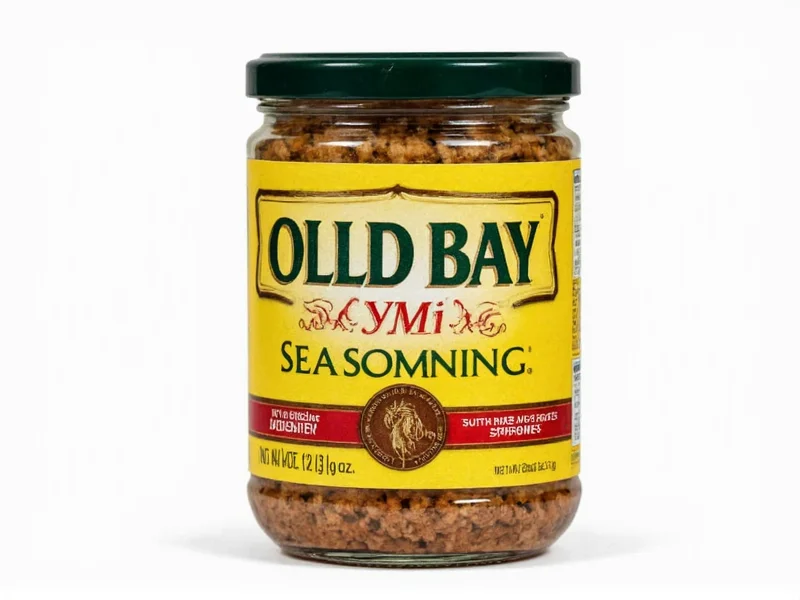When you're in the middle of preparing crab cakes or seafood boils and realize you're out of Old Bay seasoning, knowing reliable substitutes can save your recipe. This versatile spice blend, originally created for seasoning crabs in the Chesapeake Bay area, has a distinctive flavor profile that combines celery salt, paprika, black pepper, cayenne, and other spices. Understanding what makes Old Bay unique helps you create effective replacements that maintain your dish's intended taste.
Understanding Old Bay's Flavor Profile
Old Bay seasoning contains approximately 18 spices, but its dominant flavors come from celery salt, paprika, black pepper, cayenne pepper, and dry mustard. The blend strikes a balance between savory, slightly sweet, and mildly spicy notes with subtle herbal undertones. This distinctive combination makes it particularly well-suited for seafood but also versatile enough for many other applications.
Top Homemade Old Bay Substitutes
Creating your own Old Bay alternative gives you control over ingredients and sodium levels. These recipes produce approximately 2 tablespoons of substitute, equivalent to a standard Old Bay container's serving size.
| Substitute Type | Ingredients | Ratio to Replace 1 Tbsp Old Bay | Best For |
|---|---|---|---|
| Classic Homemade Blend | 1 tsp celery salt, 1/2 tsp paprika, 1/4 tsp black pepper, 1/8 tsp cayenne, 1/8 tsp dry mustard | Use 1:1 | Crab cakes, shrimp boils, fish dishes |
| Quick Pantry Substitute | 1 tsp celery salt, 1/4 tsp paprika, pinch black pepper | Use 1:1 | Emergency situations, simple seafood |
| Low-Sodium Alternative | 1/2 tsp celery seed, 1/2 tsp paprika, 1/4 tsp garlic powder, 1/4 tsp onion powder, 1/8 tsp cayenne | Use 1.5:1 (slightly more substitute) | Health-conscious cooking, dietary restrictions |
| Creole-Style Alternative | 1 tsp paprika, 1/2 tsp garlic powder, 1/2 tsp onion powder, 1/4 tsp cayenne, 1/4 tsp oregano, 1/4 tsp thyme | Use 1:1 | Gumbo, jambalaya, hearty seafood dishes |
Commercial Old Bay Alternatives
If making your own blend isn't practical, several store-bought options work well as Old Bay seasoning replacements:
- Zatarain's Creole Seasoning - Offers a similar flavor profile with slightly more heat. Use a 1:1 ratio when substituting in most recipes.
- Lawry's Creole Seasoning - Milder than Zatarain's but still makes an excellent Old Bay replacement, particularly for those who prefer less heat.
- McCormick Seafood Seasoning - Formulated specifically as an Old Bay alternative with a comparable flavor profile.
- Chesapeake Bay Seasoning - Many regional brands offer blends specifically designed to mimic Old Bay's distinctive taste.
When using commercial substitutes, check sodium levels as they can vary significantly between brands. For delicate seafood dishes, you may want to reduce added salt elsewhere in your recipe.
Specialized Substitutions for Specific Dishes
Different applications may require tailored approaches when replacing Old Bay seasoning:
For Crab Cakes
The classic use for Old Bay, crab cakes benefit from a substitute that emphasizes the celery salt component. Use the classic homemade blend but increase the celery salt to 1 1/4 tsp while reducing paprika to 1/3 tsp. This maintains the authentic Chesapeake Bay flavor profile that complements crab meat perfectly.
For Shrimp Boils
When boiling shrimp or creating a seafood boil, you'll want a substitute with more pronounced herbal notes. Add 1/8 tsp each of thyme and marjoram to the classic homemade blend. The additional herbs help the seasoning permeate the cooking water more effectively.
For Roasted Vegetables
Old Bay adds a unique dimension to roasted vegetables. For this application, reduce the cayenne by half in your substitute blend and add 1/4 tsp garlic powder. The milder heat and added garlic create a more versatile vegetable seasoning.
Storage Tips for Homemade Substitutes
Properly stored, your homemade Old Bay alternatives will maintain freshness and potency. Transfer your blend to an airtight container away from heat and light. Most spice blends retain optimal flavor for 3-6 months. For longer storage, keep your substitute in the refrigerator (up to 1 year) or freezer (up to 2 years). Always use a dry spoon when measuring to prevent moisture from degrading your spice blend.
Adjusting Substitutes to Taste Preferences
Personalize your Old Bay alternatives based on your preferences:
- For milder flavor: Reduce cayenne to 1/16 tsp or omit completely, especially when seasoning for children.
- For extra heat: Double the cayenne or add a pinch of red pepper flakes to your substitute blend.
- For smokier flavor: Substitute smoked paprika for regular paprika in your homemade blend.
- For more complex flavor: Add 1/8 tsp each of ground allspice and cloves to your base recipe.
When adjusting recipes, remember that spice potency varies by brand and freshness. Always start with less seasoning than you think you need, then taste and adjust before serving. This approach prevents over-seasoning, which can't be corrected once added.











 浙公网安备
33010002000092号
浙公网安备
33010002000092号 浙B2-20120091-4
浙B2-20120091-4